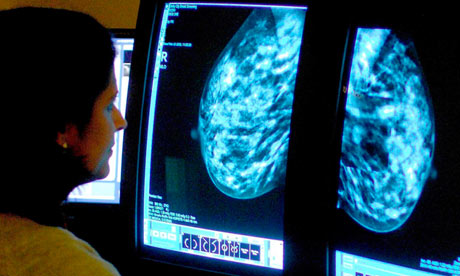
The media seem surprised that the independent breast screening review has highlighted the problem of "overdiagnosis". Yet this phenomenon has been one of medicine's "dirty little secrets" for decades. The problem is that the medical profession hasn't been upfront enough or honest about it – until perhaps now.
It's important to remember that screening is only for people with no symptoms – no lumps, no skin changes or new nipple inversion in the breasts. Symptoms should always be investigated. Screening is quite different. It is designed to pick up abnormalities that would otherwise progress into harmful problems. Breast screening does pick up abnormalities that may progress into a harmful cancer – but it also picks up abnormalities that won't go on to maim or kill.
This is overdiagnosis but, because we can't tell which abnormalities are harmful, all women are recommended to have treatment. Some of that treatment can be reasonably straightforward, such as a lumpectomy. But other treatment can be unpleasant and some women will have complications – which may be lifelong – from a mastectomy or other surgery, such as pain, infections and scar tissue.
Women have been routinely encouraged to have screenings since the breast screening programme was introduced in the UK in 1988, and its success has been measured in part by how many women took part. Almost all breast cancer charities have endorsed screening. Yet this approach is paternalistic and wrong.
Women are capable and able to decide for themselves and should be treated as such. Some women will decide that they are happy to run the risk of being diagnosed with a microscopic abnormality that will never cause them problems and so will opt for screening. Other women will decide that the chance of benefit is low and opt not to be screened. Other screening programmes have investigated the impact of offering properly informed choice to people – it can be done.
The online decision aid for PSA screening – a blood test that has been commonly used to screen for prostate cancer – gives men information that clearly states the harms as well as any potential benefits. Why don't women have something like this for breast screening? The leaflets that have been sent to women inviting them to screening have been biased heavily in favour of screening and have been light on the downsides.
It is this I find very difficult as a GP; in most other medical health choices we get the chance to sit down with our patients and discuss the options. Instead, with screening, the invitations are sent out centrally, and we GPs are not involved. This lack of individual consent has to change.
It's worth remembering that the introduction of breast screening has been driven, at least in part, by political motives. Edwina Currie described in her autobiography that it was "attractive" to offer it as part of her manifesto in 1987. So what is the scale of overdiagnosis? The report makes clear that its numbers could not be fully accurate, but that, for 10,000 women invited to screening over 20 years from age 50, it estimates 681 cancers would be found, but 129 of these would be "overdiagnosis". However, 43 breast cancer deaths would be prevented.
So, if you are diagnosed with breast cancer at screening, according to this report, there is a 6% chance treatment will stop your death from breast cancer and a 19% chance that it will be an overdiagnosis leading to unnecessary treatment. This leads to the "popularity paradox" in screening – that everyone who is treated is led to think that their treatment was lifesaving.
As for the other 509 cancers detected by the screening programme, finding the cancers by use of screening made no difference to the women's lifespans. It is likely that treatment for their cancers would have led to the same life expectancy had they been found by the screening programme or by the women themselves.
Because the trial data the report is based on is old and treatment for breast cancer is now very good, any advantage in picking up cancer earlier may not be as important as in the past. But I don't know. And this is what the healthcare profession has to get better at: saying I don't know, talking to women about screening uncertainties and assisting and enabling the person to decide.

